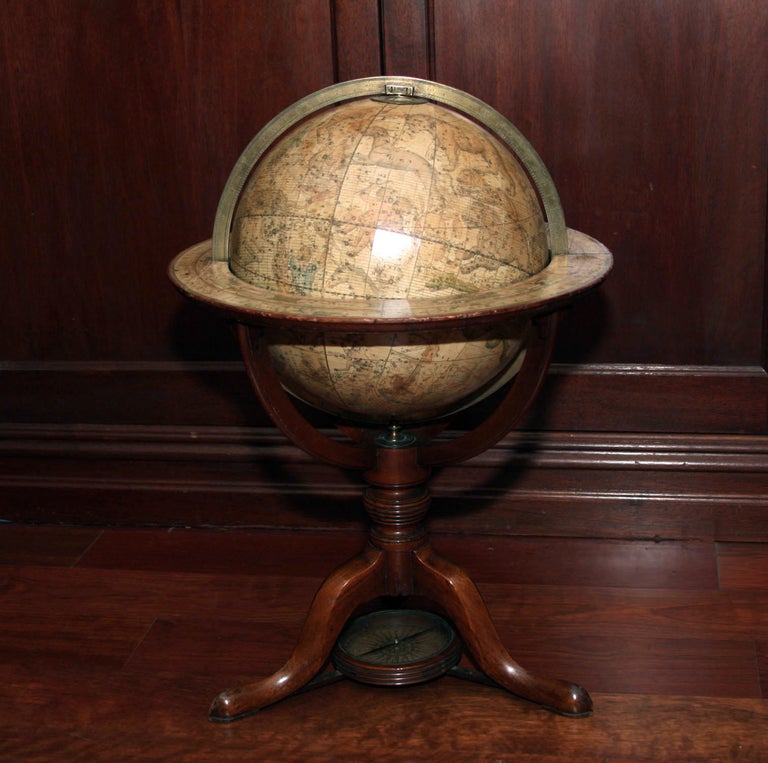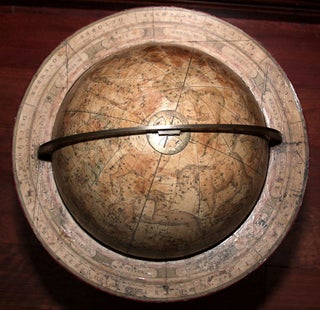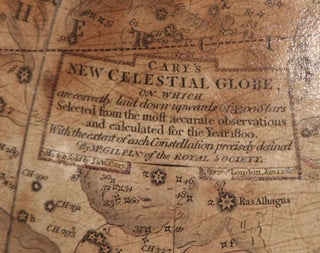Cary’s New Celestial Globe, On Which are correctly laid down upwards of 3500 Stars Selected from the most accurate observations and calculated for the Year 1800…Strand London Jan.1 1816.
12-inches diameter, 25 inches high with a 17 ½ inch diameter horizon band. In original Queen Anne, mahogany stand with a compass in the base. Globe is surmounted by a calibrated brass northern polar hour circle in calibrated full brass meridian, the horizon band with engraved paper calendar and zodiac. Fine original color; slightly age-darkened & minor staining but an attractive patina, excellent overall.
An elegant English celestial table globe by J. & W. Cary, the firm regarded as the finest British globe maker of the late Georgian period. As stated in the title, the globe plots approximately 3500 stars, but perhaps its greatest interest lay in the many constellations occupying the far lower hemisphere on the globe. These constellations would only have been observable in the far southern latitudes and thus would have derived from then recent explorations of Cook and others. This therefore would have been among the earliest globes to show constellations of the far southern skies. The title further notes that Mr. Gilpin of the Royal Society laid out the globe's constellations. A legend above the title illustrates stars at seven different magnitudes.
Beginning in 1791, the Cary brothers, John (1755-1835), and William (c. 1759-1825), offered their celestial globes in four sizes: 3 1/2, 9, 12 and 21 inches in diameter, and added an 18-inch pair in 1817. They offered these globes on different styles of stands, and Dekker and van der Krogt show a 12-inch pair mounted on low stands as table globes in Globes from the Western World. The globe offered here employs the traditional symbols of the constellations as mythological figures, animals, and increasingly as technical objects, all of which were here finished with hand color. The firm also produced schematic versions that omitted the figures.
* cf. Dekker, Elly, et al. Globes at Greenwich, p. 293; Dekker/ van der Krogt. Globes from the Western World, pp. 118, 122-123; van der Krogt, Old Globes in the Netherlands, Car 5, pp. 79-80; Fordham, Sir Herbert George. John Cary, Engraver, Map, Chart and Print-Seller and Globe-Maker; Lamb, Tom and Collins, Jeremy. The World in Your Hands: An Exhibition of Globes and Planetaria, p. 64.
Sold




